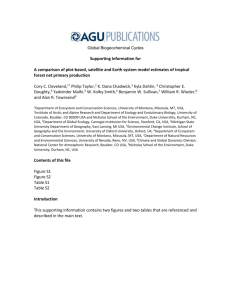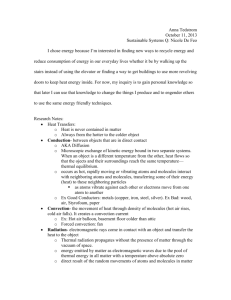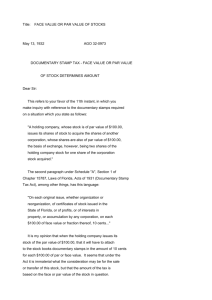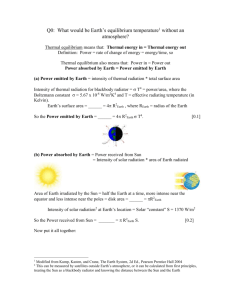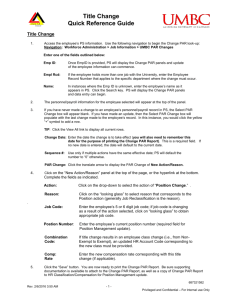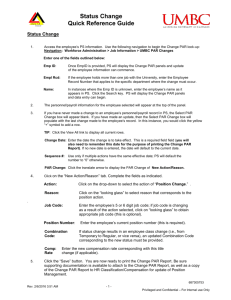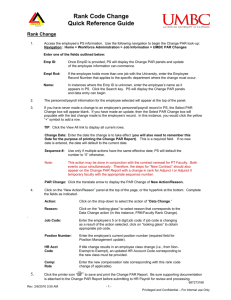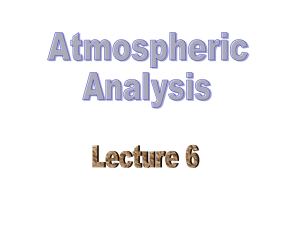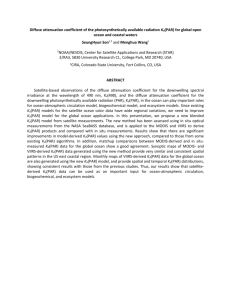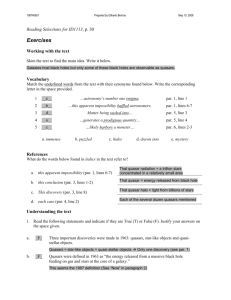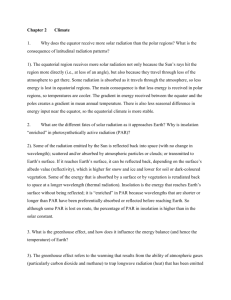Problem set 3
advertisement
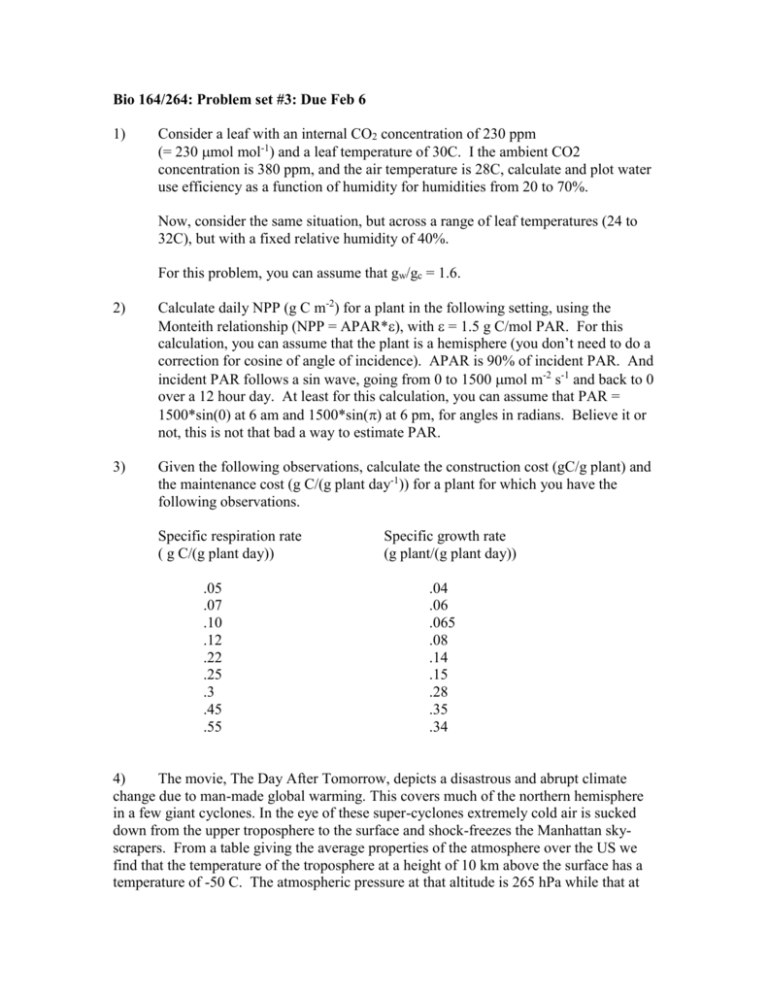
Bio 164/264: Problem set #3: Due Feb 6 1) Consider a leaf with an internal CO2 concentration of 230 ppm (= 230 mol mol-1) and a leaf temperature of 30C. I the ambient CO2 concentration is 380 ppm, and the air temperature is 28C, calculate and plot water use efficiency as a function of humidity for humidities from 20 to 70%. Now, consider the same situation, but across a range of leaf temperatures (24 to 32C), but with a fixed relative humidity of 40%. For this problem, you can assume that gw/gc = 1.6. 2) Calculate daily NPP (g C m-2) for a plant in the following setting, using the Monteith relationship (NPP = APAR*), with = 1.5 g C/mol PAR. For this calculation, you can assume that the plant is a hemisphere (you don’t need to do a correction for cosine of angle of incidence). APAR is 90% of incident PAR. And incident PAR follows a sin wave, going from 0 to 1500 mol m-2 s-1 and back to 0 over a 12 hour day. At least for this calculation, you can assume that PAR = 1500*sin(0) at 6 am and 1500*sin() at 6 pm, for angles in radians. Believe it or not, this is not that bad a way to estimate PAR. 3) Given the following observations, calculate the construction cost (gC/g plant) and the maintenance cost (g C/(g plant day-1)) for a plant for which you have the following observations. Specific respiration rate ( g C/(g plant day)) .05 .07 .10 .12 .22 .25 .3 .45 .55 Specific growth rate (g plant/(g plant day)) .04 .06 .065 .08 .14 .15 .28 .35 .34 4) The movie, The Day After Tomorrow, depicts a disastrous and abrupt climate change due to man-made global warming. This covers much of the northern hemisphere in a few giant cyclones. In the eye of these super-cyclones extremely cold air is sucked down from the upper troposphere to the surface and shock-freezes the Manhattan skyscrapers. From a table giving the average properties of the atmosphere over the US we find that the temperature of the troposphere at a height of 10 km above the surface has a temperature of -50 C. The atmospheric pressure at that altitude is 265 hPa while that at sea level is 1013 hPa. Using your knowledge of the thermodynamics of the atmosphere comment on the plausibility of the shock-freeze scenario. 5) To maintain energy balance, the earth must emit as much radiation as it absorbs. About 70% of the sunlight reaching Earth is absorbed by the surface of the planet where it is used to heat the air directly, (sensible heat) and to evaporate water (latent heat). Some of this energy is also emitted as thermal radiation. However, only about 10% of the thermal radiation leaving the planet comes directly from the surface. What is the origin of the remaining thermal radiation needed to balance the energy budget? How does the energy carried by the latent heat exchanged at the surface ultimately return to space as thermal radiation?
